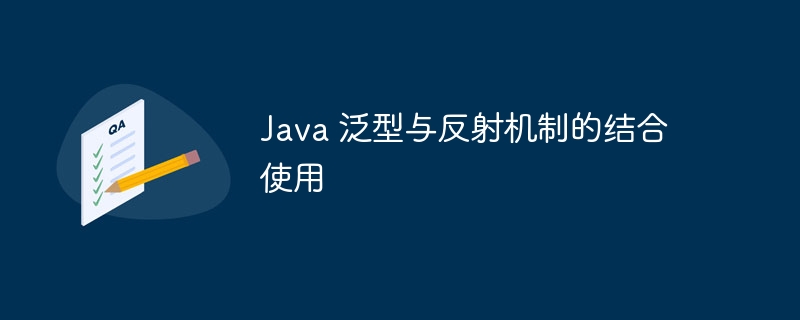
By using generics and reflection mechanisms together, we can create powerful solutions that dynamically create new instances of generic types at runtime. This allows us to build common methods on different data types, making the code more reusable and scalable, such as getting a list of student grade point averages.

Java The combination of generics and reflection mechanism
Introduction
Java The generics and reflection mechanisms are powerful tools that can significantly improve the readability, maintainability, and scalability of your code. This article explores how these two features can be used together to achieve a more flexible and powerful solution.
Generics
Generics allow us to define a class or method without specifying a specific data type. This makes the code easier to reuse and work on different data types. For example:
class Box<T> {
private T value;
public Box(T value) {
this.value = value;
}
public T getValue() {
return value;
}
}This Box class is a generic class that can store any type of object.
Reflection mechanism
The reflection mechanism allows us to obtain and manipulate metadata of Java classes. This allows us to dynamically create and modify objects at runtime. For example:
Class<?> clazz = Class.forName("my.package.MyClass");
Constructor<?> constructor = clazz.getConstructor(int.class, String.class);
Object instance = constructor.newInstance(10, "Java");This code uses the reflection mechanism to create an instance of MyClass.
Combining generics with reflection mechanism
We can use generics in conjunction with reflection mechanism to achieve highly flexible solutions. For example, we can use the reflection mechanism to dynamically create new instances of generic types.
Class<?> clazz = Class.forName("my.package.Box");
Type[] typeParameters = clazz.getTypeParameters();
Class<?>[] actualTypes = { Integer.class };
Class<?> concreteClass = (Class<?>) clazz.getGenericSuperclass().instantiateClass(actualTypes);
Object instance = concreteClass.newInstance(10);This code dynamically creates a Box<Integer> instance.
Practical Case
Let us look at a practical case of using generics with the reflection mechanism. Suppose we have a Student class that stores student information:
class Student {
private String name;
private int grade;
}We want to create a method to get a list of students' average grades. We can use generics and reflection mechanisms to implement a generic method that will work on any student subtype.
public static <T extends Student> List<Double> getAverageGrades(List<T> students) {
List<Double> averageGrades = new ArrayList<>();
for (T student : students) {
Method getGradeMethod = student.getClass().getMethod("getGrade");
double grade = (double) getGradeMethod.invoke(student);
averageGrades.add(grade);
}
return averageGrades;
}This getAverageGrades method receives a list of students of any Student subtype and uses reflection to get the average grade of each student.
Conclusion
The combined use of Java generics and reflection mechanisms is a powerful technique that can significantly improve the flexibility and scalability of your code. By using these two features together, we can create a general solution that can work on a variety of data types.
The above is the detailed content of The combination of Java generics and reflection mechanism. For more information, please follow other related articles on the PHP Chinese website!
